Survivorship
Cancer treatments and medications are getting more advanced in the past decades. Many cancer survivors are still facing physical problems due to the late effects that occur months or years after cancer treatments. These include cancer-related fatigue, lymphedema, numbness and tingling (peripheral neuropathy), pain, incontinence, etc.
1. Cancer-related fatigue
More than 50% of cancer survivors experience different levels of fatigue. It may persist for years after treatment. Mere rest or sleep cannot relieve cancer-related fatigue but will give rise to a vicious cycle. Contrarily, simple exercises like walking, lifting dumbbell, sit-to-stand training can help. If you experience significant fatigue, diminished energy, or increased need of rest that is disproportionate to any change in activity level, please consult your physician and physiotherapist for further investigation and management.
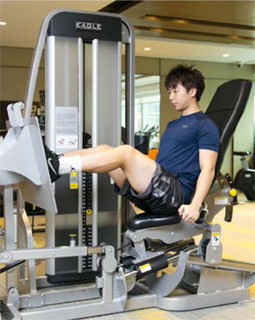



2. Lymphedema
Lymphedema is most commonly caused by the removal of or damage to the lymph nodes as a part of cancer treatment, including surgical excision and radiation therapy. Generally, about 30% of cancer survivors are being affected, particularly in breast, gynecological and prostate cancer survivors. Lymphedema can develop several months or even years after initial cancer treatment.
Lymphedema can be divided into four stages. Symptoms can be reversible and under control if it is detected and managed early.
Cancer survivors are advised to have regular bioimpendance measurement to measure the amount of fluid in a limb.
Lymphedema management includes manual lymphatic drainage (MLD) the use of equipment to improve the lymphatic circulation. Application of compression stocking or bandaging, laser and exercise.
Many research studies showed that exercise can improve lymphatic circulation without any adverse effect. You can perform exercise safely by wearing a prescribed and properly fitted compression garment.
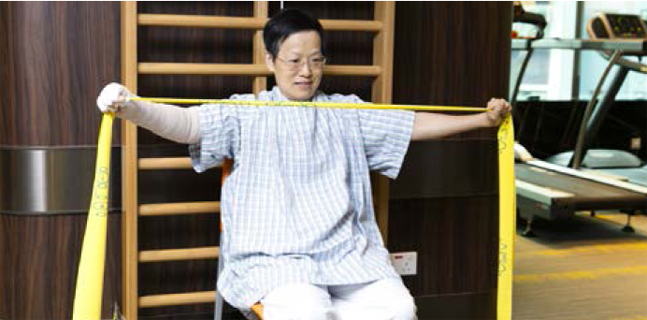
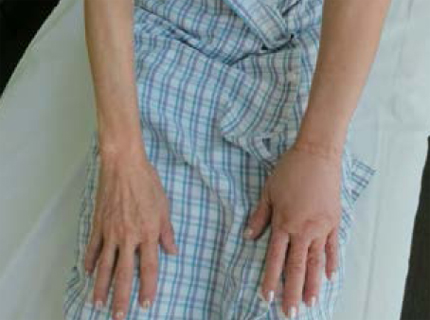
Exercise with arm sleeve Lymphedema
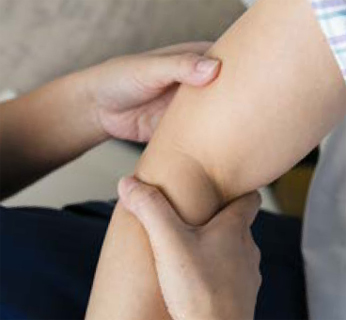


Manual lymphatic drainage Cording limits joint range of motion Bandaging
3. Numbness and pain
Cancer and its treatment can sometimes cause compression and damage of nerves in the body, i.e. peripheral neuropathy. It is characterised by numbness, weakness, tingling, pain or burning in hands or feet. Around 30-50% of cancer survivors are being affected.
The symptoms can last for years, affecting the daily function and the quality of life.
Neuropathy of upper and lower limbs can cause much inconvenience in daily life, affecting balance, writing, buttoning and picking up small objects, etc. Even touching cold things can lead to severe pain. Training and exercise in strength, balance, fine hand function and desensitisation trainings can help survivors to improve their daily function, reduce fall risks and improve their quality of life.
If you cannot feel your hands or feet, you are at risk of injuries and infection. Exercise under supervision is also recommended.

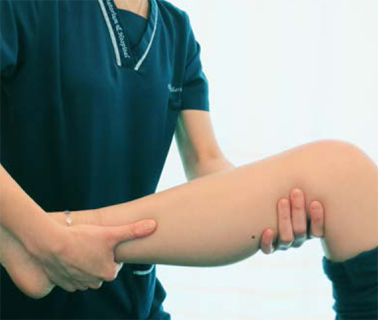
TENS treatment Mobilisation of joints
4. Incontinence
Cancers in the pelvic region, including prostate cancer, uterine cancer or bladder cancer, can lead to incontinence. The older the survivors, the higher the risk. The best treatments depend on the cause, type, duration and severity of incontinence. Pelvic muscle exercises, biofeedback, urge suppression techniques are usually effective.
5. Self-care
For those who are in a stable condition and have good exercise compliance, they only need to consult physiotherapist for reassessment, revision and enhancement of exercise goals when necessary.
1. Cancer-related fatigue
More than 50% of cancer survivors experience different levels of fatigue. It may persist for years after treatment. Mere rest or sleep cannot relieve cancer-related fatigue but will give rise to a vicious cycle. Contrarily, simple exercises like walking, lifting dumbbell, sit-to-stand training can help. If you experience significant fatigue, diminished energy, or increased need of rest that is disproportionate to any change in activity level, please consult your physician and physiotherapist for further investigation and management.




2. Lymphedema
Lymphedema is most commonly caused by the removal of or damage to the lymph nodes as a part of cancer treatment, including surgical excision and radiation therapy. Generally, about 30% of cancer survivors are being affected, particularly in breast, gynecological and prostate cancer survivors. Lymphedema can develop several months or even years after initial cancer treatment.
Lymphedema can be divided into four stages. Symptoms can be reversible and under control if it is detected and managed early.
Cancer survivors are advised to have regular bioimpendance measurement to measure the amount of fluid in a limb.
Lymphedema management includes manual lymphatic drainage (MLD) the use of equipment to improve the lymphatic circulation. Application of compression stocking or bandaging, laser and exercise.
| Stage 0 (latent) | There are no visible changes at this point. You may notice some differences in feeling, such as mild tingling, unusual tiredness, or slight heaviness. It can be confirmed by bioimpedance measurement. Condition is reversible. |
| Stage 1 (mild) | It appears mildly swollen with protein-rich fluid starts to accumulate. When you press the skin, a temporary small pit appears (pitting edema). Condition is reversible. |
| Stage 2 | It is more swollen at this stage. The swelling will not be relieved by elevating the affected limb. There is no pitting edema. There are changes in the skin, such as hardening, thickening or inflammation. Condition is non-reversible but controllable by treatment. |
| Stage 3 (severe) | This is the most advanced stage. The affected body part becomes very large and misshapen. The skin takes on a leathery and wrinkled appearance. Condition is non-reversible but controllable by treatment. |
Many research studies showed that exercise can improve lymphatic circulation without any adverse effect. You can perform exercise safely by wearing a prescribed and properly fitted compression garment.


Exercise with arm sleeve Lymphedema



Manual lymphatic drainage Cording limits joint range of motion Bandaging
3. Numbness and pain
Cancer and its treatment can sometimes cause compression and damage of nerves in the body, i.e. peripheral neuropathy. It is characterised by numbness, weakness, tingling, pain or burning in hands or feet. Around 30-50% of cancer survivors are being affected.
The symptoms can last for years, affecting the daily function and the quality of life.
Neuropathy of upper and lower limbs can cause much inconvenience in daily life, affecting balance, writing, buttoning and picking up small objects, etc. Even touching cold things can lead to severe pain. Training and exercise in strength, balance, fine hand function and desensitisation trainings can help survivors to improve their daily function, reduce fall risks and improve their quality of life.
If you cannot feel your hands or feet, you are at risk of injuries and infection. Exercise under supervision is also recommended.


TENS treatment Mobilisation of joints
4. Incontinence
Cancers in the pelvic region, including prostate cancer, uterine cancer or bladder cancer, can lead to incontinence. The older the survivors, the higher the risk. The best treatments depend on the cause, type, duration and severity of incontinence. Pelvic muscle exercises, biofeedback, urge suppression techniques are usually effective.
5. Self-care
For those who are in a stable condition and have good exercise compliance, they only need to consult physiotherapist for reassessment, revision and enhancement of exercise goals when necessary.

